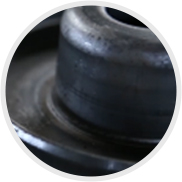 Afrikaans
Afrikaans  Albanian
Albanian  Amharic
Amharic  Arabic
Arabic  Armenian
Armenian  Azerbaijani
Azerbaijani  Basque
Basque  Belarusian
Belarusian  Bengali
Bengali  Bosnian
Bosnian  Bulgarian
Bulgarian  Catalan
Catalan  Cebuano
Cebuano  Corsican
Corsican  Croatian
Croatian  Czech
Czech  Danish
Danish  Dutch
Dutch  English
English  Esperanto
Esperanto  Estonian
Estonian  Finnish
Finnish  French
French  Frisian
Frisian  Galician
Galician  Georgian
Georgian  German
German  Greek
Greek  Gujarati
Gujarati  Haitian Creole
Haitian Creole  hausa
hausa  hawaiian
hawaiian  Hebrew
Hebrew  Hindi
Hindi  Miao
Miao  Hungarian
Hungarian  Icelandic
Icelandic  igbo
igbo  Indonesian
Indonesian  irish
irish  Italian
Italian  Japanese
Japanese  Javanese
Javanese  Kannada
Kannada  kazakh
kazakh  Khmer
Khmer  Rwandese
Rwandese  Korean
Korean  Kurdish
Kurdish  Kyrgyz
Kyrgyz  Lao
Lao  Latin
Latin  Latvian
Latvian  Lithuanian
Lithuanian  Luxembourgish
Luxembourgish  Macedonian
Macedonian  Malgashi
Malgashi  Malay
Malay  Malayalam
Malayalam  Maltese
Maltese  Maori
Maori  Marathi
Marathi  Mongolian
Mongolian  Myanmar
Myanmar  Nepali
Nepali  Norwegian
Norwegian  Norwegian
Norwegian  Occitan
Occitan  Pashto
Pashto  Persian
Persian  Polish
Polish  Portuguese
Portuguese  Punjabi
Punjabi  Romanian
Romanian  Russian
Russian  Samoan
Samoan  Scottish Gaelic
Scottish Gaelic  Serbian
Serbian  Sesotho
Sesotho  Shona
Shona  Sindhi
Sindhi  Sinhala
Sinhala  Slovak
Slovak  Slovenian
Slovenian  Somali
Somali  Spanish
Spanish  Sundanese
Sundanese  Swahili
Swahili  Swedish
Swedish  Tagalog
Tagalog  Tajik
Tajik  Tamil
Tamil  Tatar
Tatar  Telugu
Telugu  Thai
Thai  Turkish
Turkish  Turkmen
Turkmen  Ukrainian
Ukrainian  Urdu
Urdu  Uighur
Uighur  Uzbek
Uzbek  Vietnamese
Vietnamese  Welsh
Welsh  Bantu
Bantu  Yiddish
Yiddish  Yoruba
Yoruba  Zulu
Zulu Understanding Rollers and Idlers in Conveyor Systems for Enhanced Efficiency
The Importance of Rollers and Idlers in Conveyor Systems
Conveyor systems are an essential component in various industries, playing a crucial role in the movement of materials and products. Among the various components that make up these systems, rollers and idlers stand out as key elements that significantly influence the efficiency, reliability, and longevity of the conveyor. Understanding their functions and importance can help industries optimize their operations and reduce costs.
What are Rollers and Idlers?
Rollers are cylindrical components that facilitate the movement of materials along a conveyor belt. They are usually mounted on a frame and equipped to rotate freely, allowing the belt to glide over them smoothly. Rollers come in various types, including drive rollers, return rollers, and impact rollers, each serving a specific purpose based on its location and the tasks it needs to perform.
Idlers, on the other hand, are the rollers that do not drive the belt but instead support it. These components ensure that the belt maintains its tension and alignment while carrying the load. Idlers are critical for maintaining the structural integrity of the belt and minimizing wear and tear. They can be categorized into different types, such as trough idlers, flat idlers, and self-aligning idlers, depending on the design and function.
The Role of Rollers and Idlers in Conveyor Systems
1. Minimizing Friction and Wear
One of the primary functions of rollers and idlers is to minimize friction between the conveyor belt and the supporting structure. Effective rollers reduce the amount of energy required to move the belt, leading to lower operational costs. Additionally, by providing a smooth surface for the belt to traverse, rollers and idlers help prevent unnecessary wear, thus extending the lifespan of both the belt and the entire conveyor system.
2. Load Distribution
Rollers and idlers play a vital role in distributing the load evenly across the conveyor belt. Properly spaced and positioned rollers ensure that the weight is evenly balanced, thereby reducing the risk of mechanical failure. This even load distribution is particularly important in heavy-duty applications, where discrepancies can lead to excessive strain on certain sections of the belt and potential breakdowns.
rollers and idlers

3. Belt Tracking and Alignment
Maintaining proper belt alignment is crucial for optimal conveyor operation. Rollers, particularly self-aligning idlers, help guide the belt in the correct direction, preventing it from drifting off course. Misalignment can result in increased friction, belt damage, and inefficient material handling. By ensuring that the belt remains on track, rollers and idlers contribute to a smoother, more efficient operation.
4. Noise Reduction
The operation of conveyor systems can sometimes produce excessive noise, which can be a concern in various work environments. High-quality rollers and idlers are designed to minimize noise levels through effective damping and vibration absorption. This feature not only enhances the working environment but also contributes to compliance with safety regulations regarding noise levels.
Choosing the Right Rollers and Idlers
Selecting the appropriate rollers and idlers for a specific application is essential for optimizing conveyor performance. Factors to consider include the type of materials being handled, the operational environment, and the load capacity required. Industries should also evaluate the quality of the rollers and idlers, as high-quality components can significantly reduce maintenance costs and downtime.
Maintenance and Care
Regular maintenance of rollers and idlers is crucial to ensure their longevity and effectiveness. This includes routine inspections to check for wear and alignment, as well as lubrication to minimize friction and facilitate smooth operation. Implementing a proactive maintenance schedule can prevent costly breakdowns and ensure that the conveyor system operates at peak performance.
Conclusion
In conclusion, rollers and idlers are indispensable components of conveyor systems, directly impacting their efficiency, reliability, and lifespan. By understanding their roles and advantages, industries can make informed decisions regarding their selection and maintenance, leading to improved operations and reduced costs. As technology continues to advance, the development of more efficient and durable rollers and idlers promises to enhance the capabilities of conveyor systems in various applications.
-
Revolutionizing Conveyor Reliability with Advanced Rubber Lagging PulleysNewsJul.22,2025
-
Powering Precision and Durability with Expert Manufacturers of Conveyor ComponentsNewsJul.22,2025
-
Optimizing Conveyor Systems with Advanced Conveyor AccessoriesNewsJul.22,2025
-
Maximize Conveyor Efficiency with Quality Conveyor Idler PulleysNewsJul.22,2025
-
Future-Proof Your Conveyor System with High-Performance Polyurethane RollerNewsJul.22,2025
-
Driving Efficiency Forward with Quality Idlers and RollersNewsJul.22,2025





























